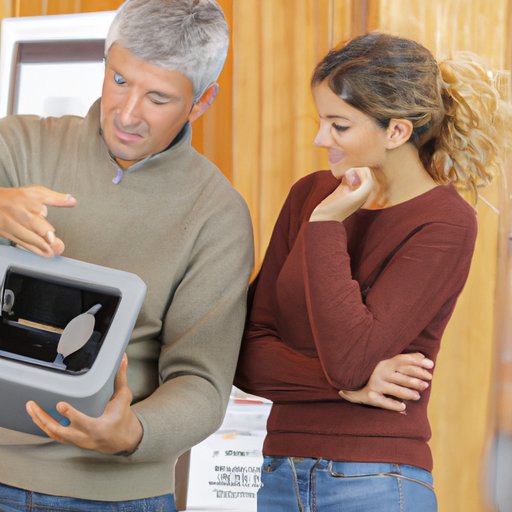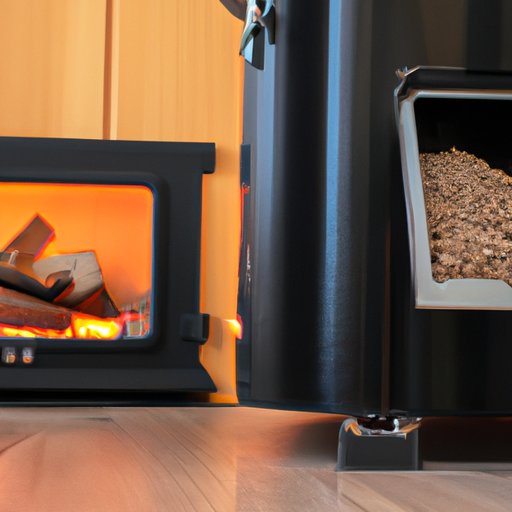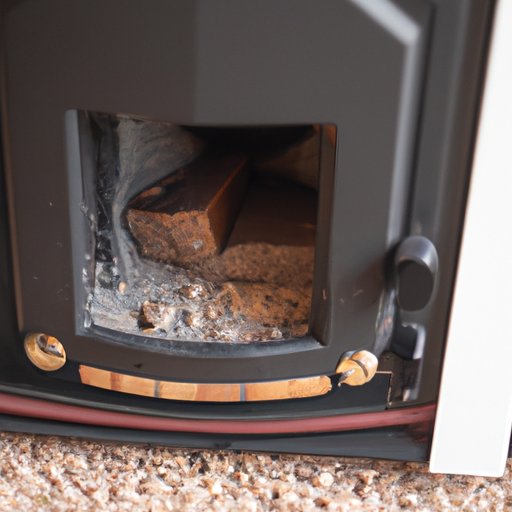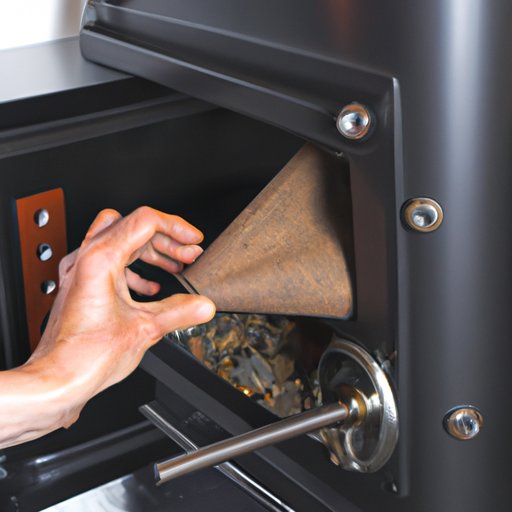Introduction
A pellet stove is a type of heating appliance that uses compressed wood pellets as fuel. It is an efficient, clean-burning and cost-effective heating option. In this article, we will explore how a pellet stove works, the benefits of using one, how to install and operate it, and common issues with pellet stoves and tips on troubleshooting.

Explaining the Mechanism of a Pellet Stove
The fuel used in a pellet stove is typically made from sawdust, wood shavings, or other wood byproducts. The wood is ground up into small particles and then formed into pellets under high pressure. These pellets are then stored in a hopper and fed into the combustion chamber of the stove, where they are burned to generate heat.
The combustion process begins when a fan blows air over the pellets, causing them to ignite. This creates a flame within the combustion chamber, which heats up the metal walls of the stove. The heated air is then blown out of the stove and into the room, providing warmth.
The heat generation process is very efficient, as nearly all of the energy released during the combustion process is converted into usable heat. According to a study conducted by the U.S. Department of Energy, “pellet stoves achieve combustion efficiencies of more than 80 percent, compared to only 40 to 50 percent for open fireplaces.”

The Benefits of Using a Pellet Stove
Using a pellet stove offers several benefits, including cost savings, cleaner burning, and environmental friendliness.
In terms of cost savings, studies have shown that pellet stoves are significantly more cost-effective than traditional heating sources such as electric or gas furnaces. A study conducted by the U.S. Department of Energy found that “heating costs for a pellet stove can be two to three times lower than those for an electric furnace.”
Pellet stoves also burn much cleaner than traditional heating sources. According to the U.S. Environmental Protection Agency (EPA), pellet stoves produce significantly less particulate matter and carbon monoxide than wood-burning stoves or fireplaces.
Finally, pellet stoves are environmentally friendly. The EPA has certified many pellet stoves as meeting their strict emission standards. In addition, since pellet stoves use recycled wood products as fuel, they help reduce the amount of waste sent to landfills.
How to Install and Operate a Pellet Stove
Installing and operating a pellet stove requires careful consideration of safety, materials, tools, and instructions. Before installing a pellet stove, it is important to read and understand the manufacturer’s instructions, as well as local codes and regulations.
You will need to purchase the necessary materials and tools for installation, such as venting, stove pipe, and insulation. Be sure to measure the space accurately before purchasing the materials to ensure that everything fits correctly. You may also need to hire a professional for the installation if you are not comfortable doing it yourself.
Step-by-Step Guide on How to Use a Pellet Stove
Once your pellet stove is installed, it is important to follow the manufacturer’s instructions for proper use. Here is a step-by-step guide on how to use a pellet stove:
- Preparing the Stove for Use: Make sure the vents and chimney are clear and clean. Check the gaskets and seals around the door to make sure they are tight and secure. Ensure that the hopper lid is closed and locked.
- Loading Pellets into the Hopper: Open the hopper lid and fill it with wood pellets. Make sure to check the manufacturer’s recommendations for the amount of fuel to be loaded into the hopper at one time.
- Igniting and Adjusting the Fire: Turn on the power switch to start the ignition process. Once the pellets begin to burn, adjust the air intake and exhaust vents to control the intensity of the fire.
- Shutting off the Stove: When you are finished using the stove, turn off the power switch and allow the remaining pellets to burn completely. Allow the stove to cool completely before cleaning the ashes.

Common Issues with Pellet Stoves and Tips on Troubleshooting
While pellet stoves are generally reliable and easy to maintain, there are some common issues that may arise. Common issues include clogged vents, insufficient air supply, and improper fuel loading.
If you encounter any of these issues, the first step is to refer to the manufacturer’s manual for troubleshooting instructions. You may also need to contact a qualified technician for assistance. Some general troubleshooting tips include checking the venting system for blockages, adjusting the air intake and exhaust vents, and making sure the fuel is properly loaded into the hopper.
Conclusion
In conclusion, a pellet stove is a cost-effective, clean-burning and efficient heating option. This article explored how a pellet stove works, its benefits, and how to install and operate it. Additionally, common issues and troubleshooting tips were discussed.
Whether you are looking for an alternative heating option or just want to save money on energy costs, a pellet stove is an excellent choice. With proper installation and maintenance, a pellet stove can provide years of reliable service.
(Note: Is this article not meeting your expectations? Do you have knowledge or insights to share? Unlock new opportunities and expand your reach by joining our authors team. Click Registration to join us and share your expertise with our readers.)
